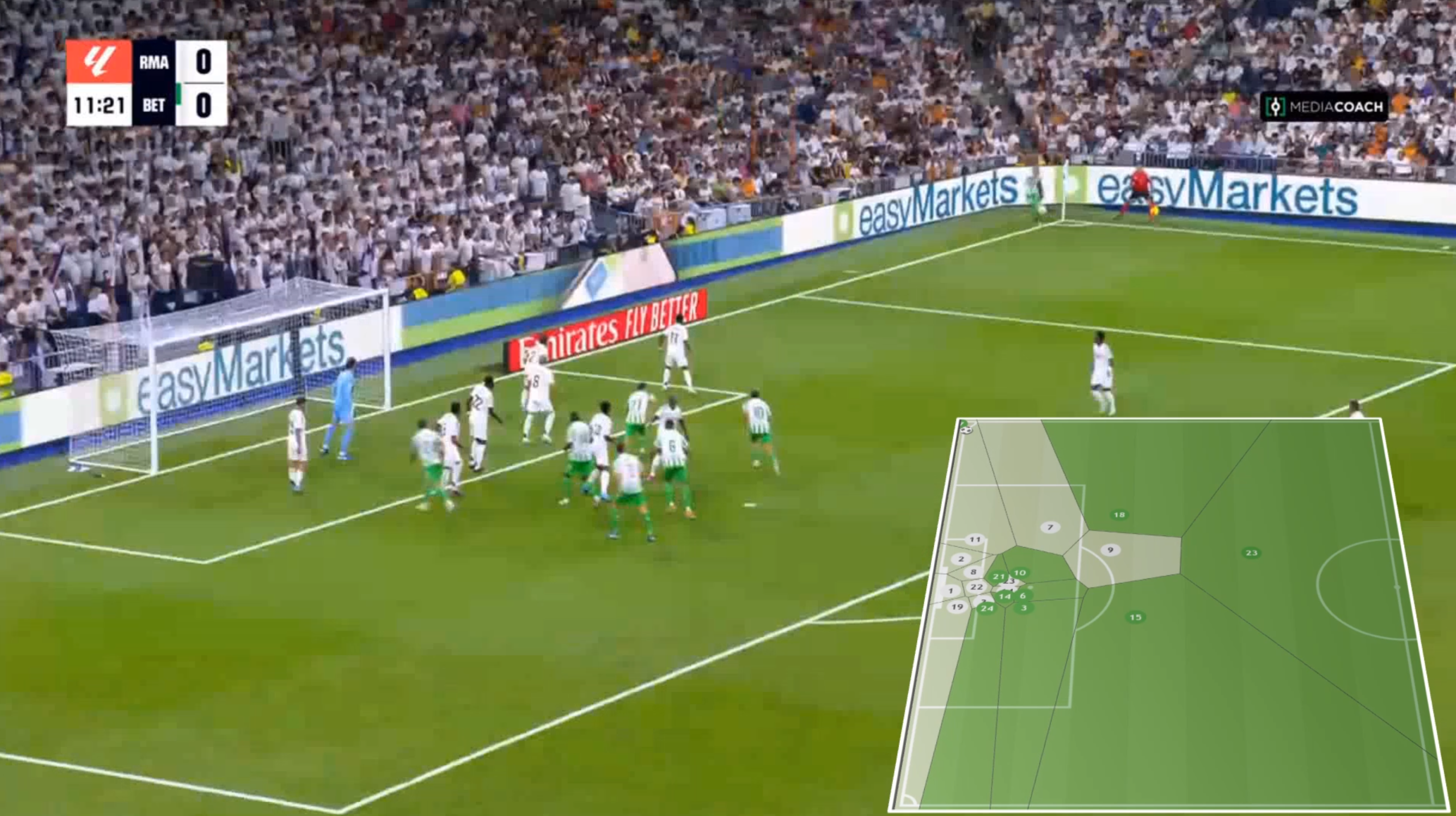
03 Oct Transform Your Corner Kick Strategies: Optimize Defense and Attack with an Advanced Simulator
In football, corner kicks are key plays that can make a difference in the outcome of a match. Although they represent only a small percentage of the game, their impact can be decisive if executed correctly. Through our work at LALIGA, we are using an advanced simulator that allows for detailed analysis of corner kicks, helping coaches improve both defensive and offensive strategies.
This analysis provides coaches with key information to enhance training planning and make better tactical decisions during matches.
Key Findings and Applications for Coaches
1. Anticipate Opponent’s Defense and Exploit Weaknesses
One of the primary capabilities of the simulator is to analyze how rival teams tend to defend corner kicks. Based on their lineup, tactical history, and player profiles, it is possible to predict the type of defense (zonal, man-marking, or mixed) they will likely use.
Practical application:
- If the analysis shows that the opponent tends to leave key areas, such as the near post, undercovered, you can design plays to exploit these weak spots.
- Prepare your team with tactical simulations that reflect how the opponent is likely to adjust their defense, allowing your players to react more quickly and effectively on the field.
2. Identifying Key Players and Individual Marking
Another important feature is the ability to identify the most dangerous players on the opposing team during corner kicks. This helps determine whether man-marking or zonal coverage will be more effective in neutralizing these key headers.
Tactical application:
- Assign specific markers to neutralize the most dangerous players during corners, adjusting the marking based on their past performance and tendencies.
- During training, try out different combinations of man-marking or zonal marking depending on the attackers’ profiles.
3. Simulating Different Defensive and Offensive Strategies
Since corner kicks occur infrequently during matches, one of the simulator’s advantages is the ability to generate multiple virtual scenarios to train players. This allows for testing different tactical setups and seeing how they affect the outcome of the play.
Application in training:
- Simulate various types of corners (short, near post, far post, six-yard box) to evaluate how your team responds to different situations.
- Adjust the defensive strategy during training based on observed patterns, optimizing players’ ability to quickly adapt during matches.
4. Predicting the Direction of the Corner Based on the Kicker and Side of the Field
The analysis also includes predictions of where the ball is most likely to go based on the kicker and the side from which the corner is taken. This allows goalkeepers and defenders to better anticipate the play.
Direct application:
- Train goalkeepers and defenders to adjust according to the patterns observed in rival kickers, enabling them to improve decision-making in real-time.
- Practice different defensive setups based on the kicker’s position and the team’s tendencies, preparing players to react more accurately during the match.
5. Analyzing the Success and Failure of Plays
The simulator evaluates which types of corners have been more successful or have failed more often. This allows for adjustments in both defensive and offensive strategies based on previous results and learning from unsuccessful plays.
Practical application:
- Adjust your corner kick strategy based on previous analyses that show which combinations of plays tend to work better.
- Plan specific training sessions to strengthen corner kick defense and attack, improving your players’ ability to execute and defend these plays in real-world conditions.
Conclusion
The advanced corner kick simulator we are using at LALIGA provides coaches with a powerful tool to optimize their defensive and offensive strategies. The detailed analysis and simulations offer a tactical advantage, allowing adjustments in both training and real-time decision-making. With this information, coaches can maximize the effectiveness of set-pieces, improving performance at both ends of the field.
References:
- Smith, R., & Jones, D. (2020). Effectiveness of Zonal vs. Man-to-Man Marking in Professional Football Corners. Journal of Sports Science, 35(2), 123-135. doi:10.1080/02640414.2020.1755758
- Miller, A., & Lee, K. (2019). Spatial Analysis of Football Corners Using Voronoi Diagrams. Journal of Football Analysis, 45(1), 78-89. doi:10.1016/j.footballanaly.2019.100489


